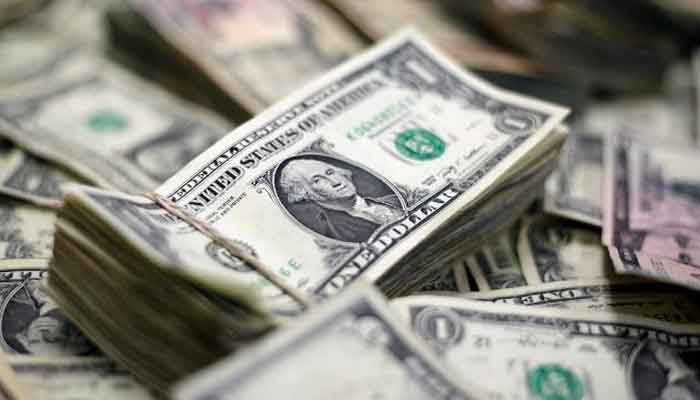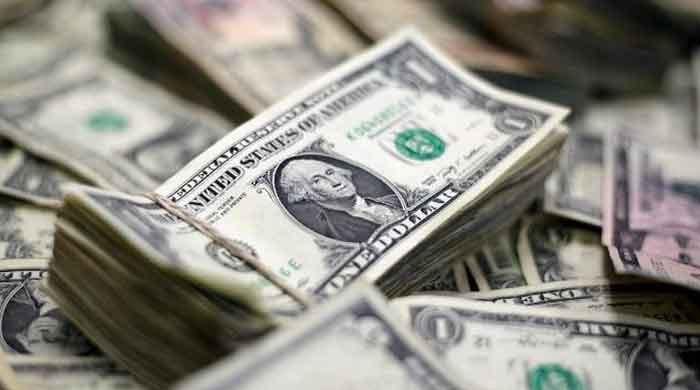
The prolonged Russia-Ukraine conflict and the Middle East crisis have resulted in a radical shift in the global landscape, one that is resonating across economic, geopolitical, and cultural realms. Among these shifts is the momentum towards multipolarity, dispersing global economic influence among several advanced economies.
The complex global trends have also led to a feeling of uncertainty among stakeholders – ranging from investors to multinational corporations and individuals. As the world prepares for an election year – several countries, including the US and the UK, are preparing for elections later this year – this new wave of unpredictability haunts policy discourse and future trajectories.
Regardless of political affiliations, governments confront mounting debt burdens and substantial deficits, inviting scrutiny from vigilant financial markets. The intricate interplay of fiscal deficits, monetary policies, and global economic dynamics paints a sobering picture of the dollar’s prospects.
The unprecedented fiscal deficit surge and the dwindling surplus savings are the key factors that are likely to impede growth across the world, ushering in a period of deceleration and weakened investment sentiment.
Apart from geopolitical analysis, technical projections are also indicating a downward trend for the US Dollar Index which measures the dollar’s strength against a basket of major currencies. Forecasts say that the dollar is likely to decline to 96-96.2 by 2026-28 from its current standing at 102.4. Moreover, as the US administration intensifies sanctions, risks associated with holding dollar-denominated assets amplify, prompting central banks and policymakers to seek diversification in international financing.
The message is clear: the once unassailable dominance of the dollar is facing headwinds, signalling a potential downward spiral in the years ahead. The US dollar is facing challenges that demand attention. As nations in the Global South grapple with the risks inherent in relying on a currency subject to the whims of a single nation, the allure of alternatives grows.
The weaponization of the dollar, whether through monetary manipulation or punitive sanctions, exacts a toll felt far beyond America’s borders. With nearly a third of the world’s GDP ensnared in sanctions, the imperative to diversify becomes urgent. IMF data reveals a decades-low confidence in the dollar, mirrored by a surge in gold prices and a wary eye on inflation.
America’s economic ascendancy has long been rooted in the bedrock of free markets; recent political manoeuvres threaten to erode this foundation. Protectionism, trade barriers, and corporate infringements undermine the very principles that propelled the nation to prosperity. For emerging markets in the Global South, the spectre of becoming the next target looms large. As China grapples with trade tensions, others watch nervously, wondering if they are next in line. In this uncertain landscape, self-reliance becomes increasingly attractive, calling for nations to chart their own financial destinies.
The US Treasury’s response to pandemic-induced deficits, marked by a surge in T-bill issuance, coupled with the Fed’s aggressive interest rate policies and growing reserve balances, has created a complex policy matrix. As T-bill issuance skyrockets by 125 per cent since 2019 and reserve balances balloon by 118 per cent, the strain on the US economy has become palpable.
These factors suggest an inevitable easing of the Fed’s monetary stance in the coming years. The escalating pressure on the US economy, fuelled by mounting interest payments on T-bills and reserve balances, leaves little room for complacency.
As the dollar depreciates, emerging economies stand poised to reap the benefits. A weakening greenback augurs well for global liquidity and relaxed financial conditions, providing a boon for financing in these markets. In this shifting financial landscape, gold and bulk commodities stand as hope for stability, their already lofty prices are likely to remain elevated. Central banks, wary of overreliance on the dollar, are diversifying their reserves, while more countries are now striving for self-sufficiency amidst supply chain disruptions and the imperative of green transformation.
The risks of societal polarization and economic destabilization loom ever larger. In central banking, the dollar reigns supreme, constituting a staggering 58.9 per cent of global reserves. Its dominance is further underscored by the paltry shares held by other currencies like the euro, yen, yuan and pound. Even in private markets, the dollar maintains a commanding presence, cementing its status as the preeminent currency of choice in the complex web of global finance.
Right after the Russian invasion of Ukraine, stringent sanctions on Russia – a bid to cripple its economy – birthed unintended consequences. Far from surrendering, Russia rallied, championing alternative financial networks, challenging the dollar’s hegemony. This de-dollarization wave has now extended globally, from India to South Africa, heralding a shift in economic dynamics. The weaponization of the dollar has catalyzed a significant shift, with nations forging paths towards financial independence.
As China and Russia spearhead their systems, America’s grip on global finance faces unprecedented challenges. The movement towards de-dollarization signifies not just an economic reordering but also a geopolitical recalibration, shaping the contours of international power.
The BRICS alliance has also emerged as a formidable challenger to the established dominance of the G7, heralding a shift in the global economic order. While the G7 commands a significant share of the world’s GDP, the growing influence of BRICS nations promises to narrow this gap in the coming years. Anchored by a combined population exceeding 3.6 billion, BRICS wields substantial demographic power and is poised to surpass 50 per cent of the global population with potential new additions.
Their collective economic might is underscored by a 25 per cent share of global goods exports, positioning them as key players in the realm of international trade. To bolster economic resilience, BRICS nations are exploring avenues to promote the use of local currencies in transactions, mitigating risks associated with exchange rate fluctuations and reducing reliance on the dollar.
India, in particular, is spearheading efforts to boost exports by advocating for the use of its currency in international trade, a move echoed by other countries grappling with dollar shortages or Western sanctions. At the heart of the push for financial autonomy lies a pervasive concern among global capitals: the spectre of American sanctions leveraging the full force of its currency, as seen in the crippling measures against Russia. This apprehension fuels the recent surge in de-dollarization efforts, as nations strive to shield their economies from potential future vulnerabilities.
From the breakdown of the Bretton Woods system to the advent of the euro in 1999, and from the aftermath of the 2008 financial crisis to the present, doubts about the dollar’s supremacy have persisted. Notably, the proportion of central bank reserves held in dollars dipped below 58.9 per cent in the final quarter of last year, down from nearly 70 per cent in 2000, underscoring the steady march towards de-dollarization.
Amidst aspirations for financial autonomy, smaller economies are being increasingly cautious of dollar-denominated debts. This, along with efforts to bolster regional trade alliances, propels nations to seek alternatives to the dollar. The dollar’s surge also escalates import bills for essential commodities like fuel and food. Particularly vulnerable are nations reliant on imports, where soaring dollar values quickly strain budgets.
De-dollarization serves as a shield against currency volatilities and mounting import expenses, offering respite to vulnerable economies. While the dollar’s appreciation may signal strength for the US economy, its impact on emerging markets is far more negative. As the greenback strengthens, the economies of emerging markets bear the brunt, grappling with currency devaluation and stifled growth prospects.
Data analysis reveals a telling inverse correlation between the value of the US dollar and the performance of emerging market economies, as evidenced by the MSCI Index and GDP growth trends. A depreciating dollar offers a glimmer of hope for these nations, ushering in relaxed financial conditions and increased liquidity. The current situation, with the DXY index hovering around 103, reflects a 7.0 per cent appreciation since January 2022, driven in part by Federal Reserve rate hikes. However, this appreciation comes at a cost, exerting downward pressure on the currencies of emerging markets.
As policymakers navigate this complex terrain, the delicate balance between dollar strength and emerging market resilience remains a pivotal consideration, with far-reaching implications for global economic stability.
The writer is a freelance contributor.
Disclaimer: The viewpoints expressed in this piece are the writer’s own and don’t necessarily reflect Geo.tv’s editorial policy.












